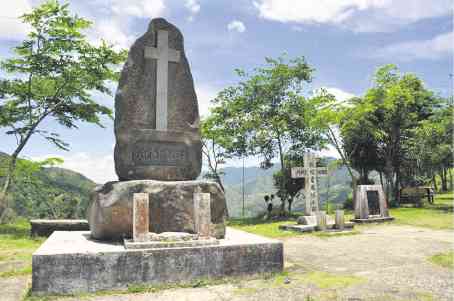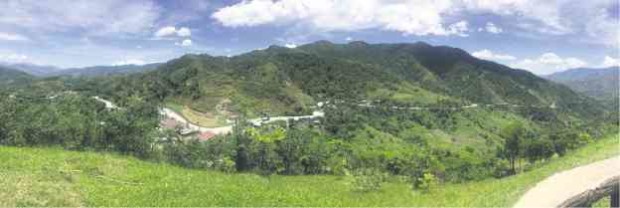Cagayan Valley’s ‘killer highway’ is where heroes died, too
SAN JOSE CITY—Recent accidents have painted a grim picture of Dalton Pass, “the gateway to the Cagayan Valley and the rice terraces,” which lies on the crest where the Sierra Madre and Caraballo mountain ranges meet.
Its name as a “killer highway” was magnified on April 18 when 34 people were killed when their Abra province-bound bus fell into a ravine there.
But starting today until May 13, Dalton Pass will be remembered for its role during World War II. Formerly called Balete Pass, Dalton Pass was the site of the pivotal “Battle of Luzon” where thousands of allied troops drove away the Imperial Japanese Army.
“The battle, [which took place from] late February 1945 up to May 31 that year, was for domination of the north, which was of decisive importance for the tide of the war,” according to published American and Filipino accounts of the war.
The retreating Japanese soldiers took a delaying stand on the Balete Pass and other nearby points from Pangasinan province to Bayombong town in Nueva Vizcaya province as they made their final defensive position in Kiangan town in Ifugao province.
Following the liberation of Manila and Central Luzon, the 25th Division of the United States Army pushed toward the Balete Pass along with the Filipino troops belonging to the Philippine Commonwealth Army, the Philippine Constabulary and the recognized units of the Filipino Luzon guerrillas.
The battle claimed the lives of 7,750 Japanese soldiers, 685 American soldiers and 285 Filipino fighters and left thousands others wounded.
The allied forces eventually took control of the pass on May 31, 1945.
The defeat of the Japanese led to the surrender in Kiangan of Gen. Tomoyuki Yamashita, known as the “Tiger of Malaya,” who commanded the 14th Japanese Area Army with more than 260,000 troops.
One sad note in the cleansing of Balete Pass was the death of the assistant commander of the US Army Division, Brig. Gen. James Leo Dalton II, who was shot by a Japanese sniper. It was in his honor that the pass was renamed Dalton.

The gallantry of Japanese soldiers is immortalized through monuments at Dalton Pass along the Nueva Vizcaya-Nueva Ecija border.
In September 2011, Congress passed a resolution that made Balete Pass a national shrine “to give honor to those who sacrificed their lives for the liberation of the country.”
On the summit of the Dalton Pass stand three markers—the National Shrine of the Battle of Balete Pass, the Chinese Overseas Wartime Hsuehkan Militia Memorial Balete Pass and the Japanese Memorial.
The Chinese memorial honors the fallen militiamen who fought alongside the allied forces.
In 1995, then President Fidel Ramos issued a proclamation declaring every May 10-13 as the official commemoration of the Battle of Balete Pass.















